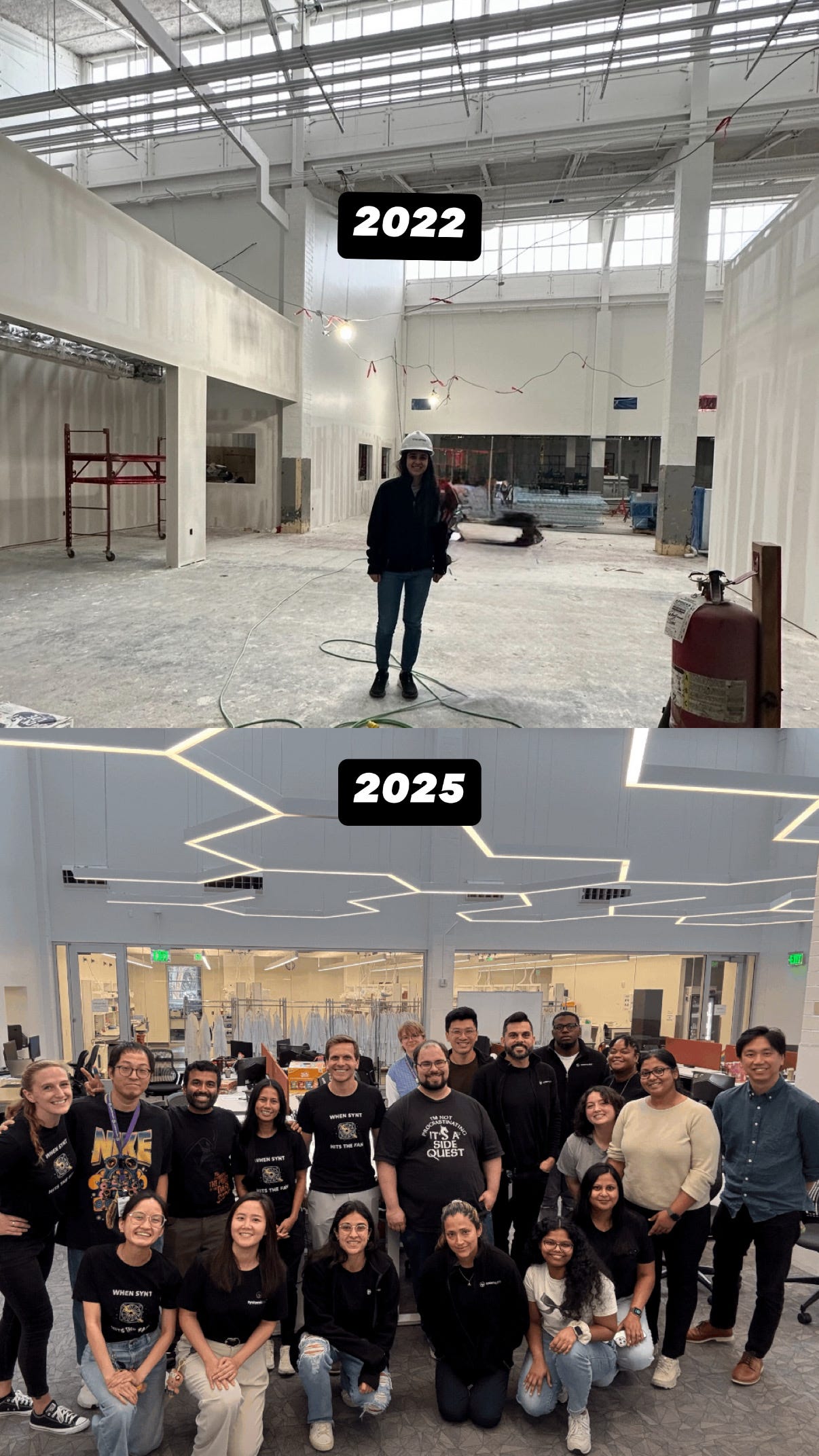I’m closing a chapter today - but the mission continues.
My grandparents all died from cancer when I was a kid growing up in Brazil. And though I was just a kid, that helpless feeling lit a fire in me. I promised myself I’d dedicate my life to fighting the disease I believe is humanity’s biggest challenge.
I worked hard to make it possible. I became the first kid from my city to get into Harvard - one of only six from Brazil that year. With ~90% financial aid, some additional scholarships, and side jobs (dog walker, babysitter, bartender, barista, dorm-room cleaner, mailroom sorter…), I studied bioengineering to build technologies that could one day help millions of doctors treat patients like my grandparents.
I did research in cancer immunotherapy at the Mooney Lab for Cell and Tissue Engineering, and after graduating, I joined Allevi, where I went from scientist to CSO in 3 years. We built and sold bioprinters, bioinks, and software to research labs worldwide.
While there, I immersed myself in bioprinting and closely followed the rise of AI in drug discovery. It was clear that AI/ML would shape the future, but equally clear that its value depends entirely on the quality of datasets. Yet most in silico models were trained on preclinical data from cells and animals - data that fails to capture human-relevant biology, limiting their ability to predict clinical outcomes.
I started obsessing: could we generate better data from bioprinted tissues produced at scale? Could we create virtual healthy and diseased organs for computational drug testing?
But existing bioprinting was stuck at what I call research prototyping: slow, variable, just a few tissues at a time. To make an impact, we needed production-level bioprinting to create large, consistent datasets.
No one in bioprinting was doing that. So I looked beyond. Who in 3D printing truly understands production?
That’s when I found 3D Systems, the inventors of 3D printing. I sent a cold LinkedIn message. Months later, they acquired Allevi.
I had briefly left to start the AI + bioprinted tissue data company I was obsessing about, but was convinced to come back and lead a newly created bioprinting department as VP/GM.
I worked in the department during the day and spent nights developing our first prototypes. In 2022, I pitched the vision internally, and with $15M in funding, we launched Systemic Bio as a subsidiary of 3D Systems to build production-scale bioprinted tissue models.
What started from a shared bench and a phone booth “office” grew into a 15,000 sq. ft. lab, the h-VIOS™ platform (human vascularized integrated organ systems), a team of 30, seven patent families, a manufacturing facility with capacity to bioprint 6,000 vascularized hydrogels per month, partnerships with top pharma, and an Innovation Award competing against labs I’ve long admired.
Systemic Bio, unfortunately, is a chapter that ended last week. The problem we were solving is massive, requires significant investment, and the industry is undergoing tremendous challenges. 3D Systems is laser-focused on profitability and can no longer hold this cost-intensive bet.
To my team: you were the heart of Systemic Bio. Thank you for dreaming this dream with me, trusting me to lead it, and pushing until the very end. Watching you grow, learn, innovate, build families, and pour yourselves into this mission has been one of the greatest honors of my life. None of what we built would have been possible without your dedication and belief that we could change the future of drug development together. We will look back and connect the dots soon.
To 3D Systems, especially Jeff Graves, who believed in me from the beginning, Menno Ellis, who mentored me through my corporate journey, and Chuck Hull, who invented the technology and is a tremendous inspiration to all of us: thank you for giving me the opportunity to work, dream, and bring this technology to life.
To our partners: thank you for believing in the vision and investing your time and trust to help us build it.
To my personal mentors who became allies: thank you for generously sharing your time to make introductions, help me think through pivots, explore new approaches, and gain a deeper understanding of the problems we were working to solve.
The scientist who once stood by her grandfather’s hospital bed, determined to change the way we fight disease, still has that same fire.
I’m taking a moment to pause, reflect, and recharge after 12 years of going nonstop - navigating immigration challenges, a pandemic, and the realities of building deep tech from the ground up.
But this isn’t the end. It’s the space between chapters.
The mission remains. The vision for better, human-relevant drug development is clearer than ever. And I’ll be back soon - more focused, more experienced, with several battle scars, but even more determined.



Que seja um lindo entretempos, querida. E que seu coração te leve para um novo ciclo tão especial quanto essa história que viveu até aqui. A vida é feita de ciclos de "vida-morte-vida" e é bem incrível viver o luto de algo que acabou e o nascimento do que está por vir. Beijos